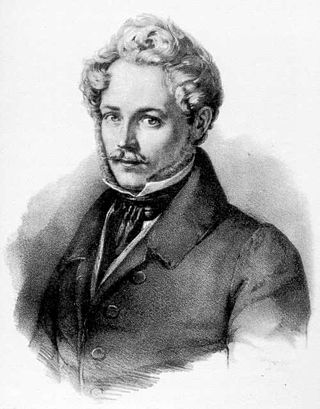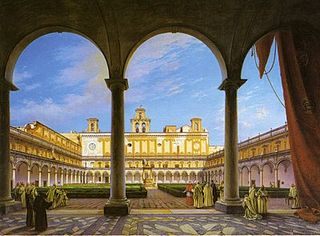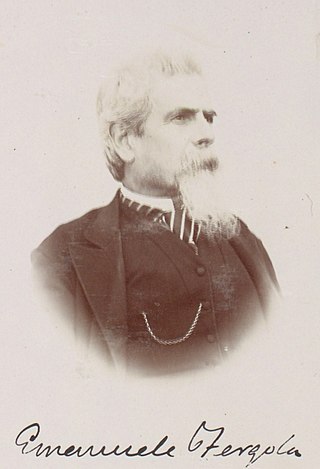
Sebastiano Conca was an Italian painter.

Jacob More (1740–1793) was a Scottish landscape painter.
Events in the year 1807 in art.

Charles Coleman was a British landscape and animal painter, born in Pontefract, in Yorkshire, England. He was active principally in Rome, where was an important influence on Nino Costa and made a significant contribution to the formation of the Campagna Romana School of painting.

Giacinto Gigante (1806–1876) was an Italian painter, engraver, and teacher. He was known for his landscape and vista paintings, exemplary works of the Neapolitan School of Posillipo.
Events from the year 1737 in art.

Ernst Fries was a German painter, draftsman, watercolourist, etcher, printmaker, and lithograph. Besides Karl Philipp Fohr and Carl Rottmann, he was the youngest of the so-called triumvirate of Heidelberg Romanticism. His works represent a transition from Romanticism to Realism.

Balthasar Anton Dunker was a German landscape painter and etcher.

Giuseppe Errante was an Italian painter.

The School of Posillipo refers to a loose group of landscape painters, based in the waterfront Posillipo neighborhood of Naples, Italy. While some among them became academicians, it was not a formal school or association.

Salvatore Fergola, was an Italian painter, mainly of landscapes or vedute in and around his native Naples. He is considered a member of the School of Posillipo.

Filippo Marsigli was an Italian painter in the Neoclassic style. He specialized in large canvases on epic, historical subjects.

Georg David Matthieu was a German engraver and portrait painter in the Rococo style who worked as court painter for the Duke of Mecklenburg.

Maria Anna Walburga Lämmerhirt was a German painter, drafter, travel writer, and lady-in-waiting. Through her diary, Für mich gemerkt auf meiner Reise nach Italien 1791, she contributed to travel literature.

Harvest Time at Carditello is a 1791 oil on canvas painting by Jakob Philipp Hackert, who had become a painter to the royal court at Naples. In 1791 he was commissioned to paint frescoes in the 'salottino' of the manorhouse at Carditello, but the cycle was partly destroyed by anti-Bourbon figures following the unification of Italy.

Janus Genelli was a German painter of Italian descent. He specialized in Classical landscapes.

Jacob Wilhelm Mechau (1745-1808) was a German landscape painter, graphic artist and etcher. His style was part of the transition from Classicism to Romanticism.

Adolf Friedrich von Olthof was a Swedish Pomeranian councilor, and patron of the arts.

Emmanuele Giuseppe Gabriele Gennaro Fergola was an Italian astronomer, mathematician, and also Senator of the Kingdom of Italy.

George Augustus Wallis was an English painter, active in Italy.
























